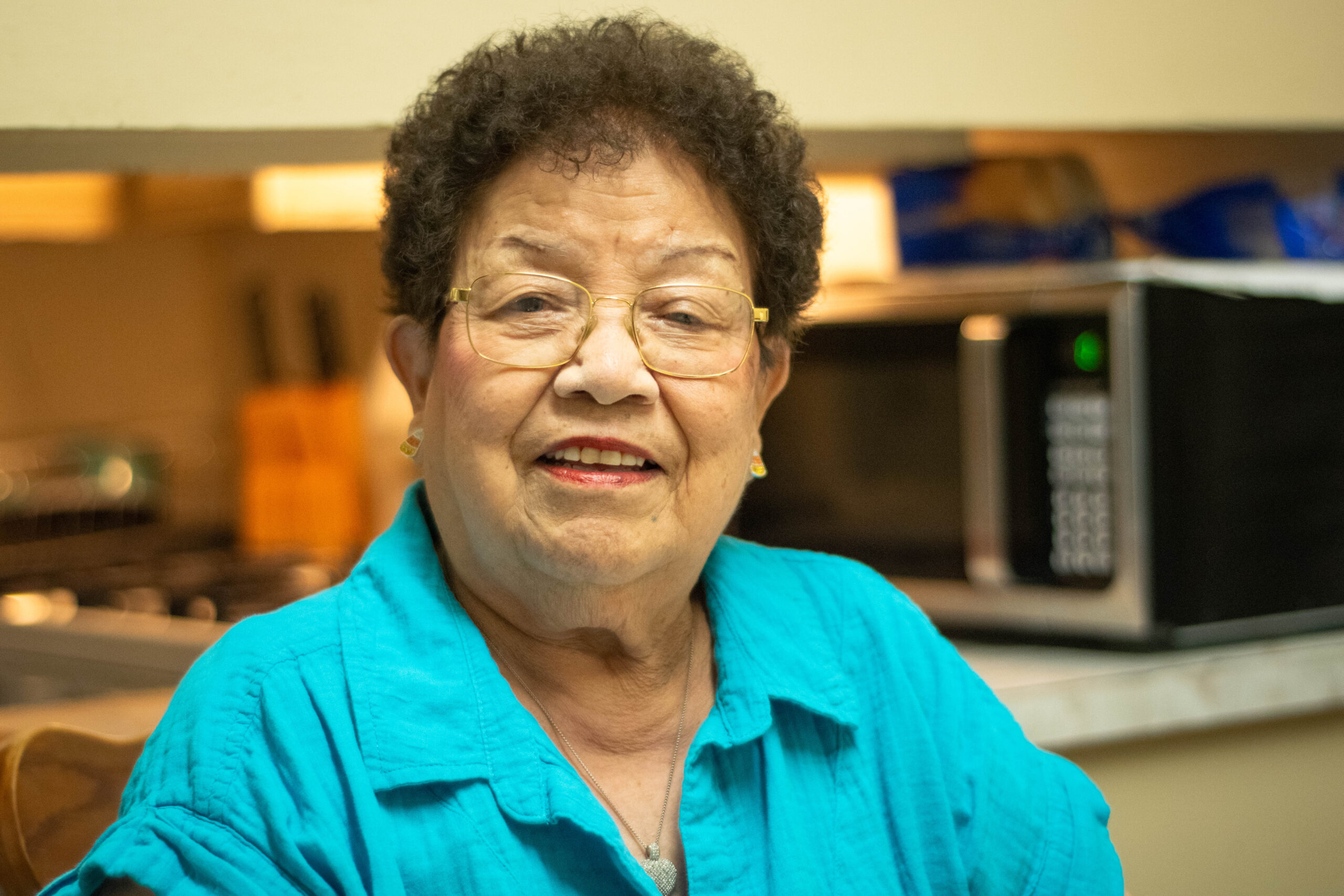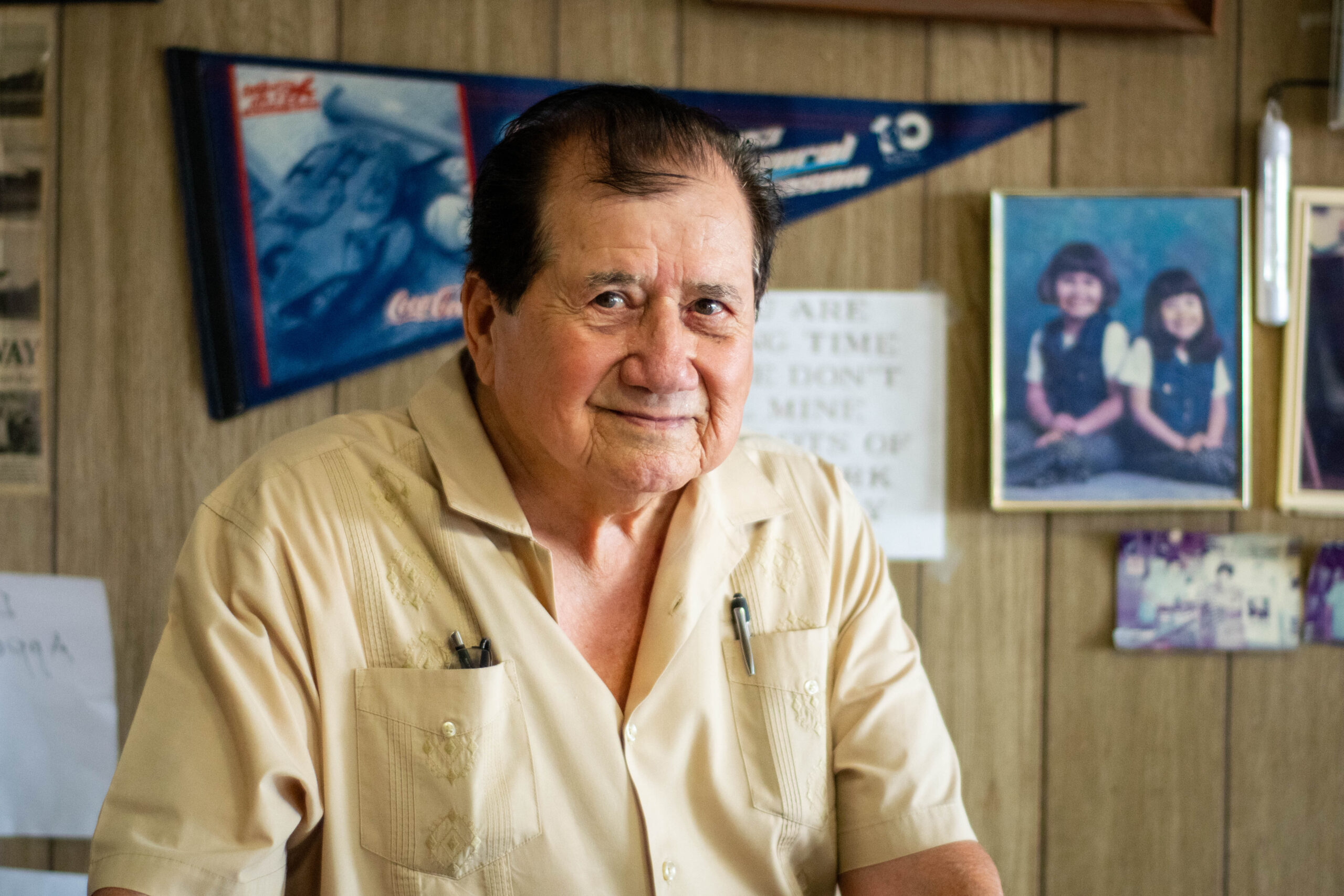Johnny Canales, the groundbreaking television presenter who introduced Tejano and cumbia bands to an international audience, would have been 82 today.
His death on June 12 prompted many across the Lone Star State to reminisce about their time growing up watching “The Johnny Canales Show,” especially those of us from South Texas, where he would broadcast.
Those memories often took the form of Sunday mornings, making breakfast and dancing along to the bands that would grace his stage – La Sombra, Grupo Mazz and, of course, Selena Quintanilla among them.
Small-town memories
Canales was born on Aug. 23, 1942, in General Treviño, Nuevo León, Mexico. His family moved to Texas when he was a child, settling in Robstown, a small community right outside of Corpus Christi.
Robstown resident Theresa Alonzo, grandmother of Texas Standard digital producer Raul Alonzo, remembers the young Canales shared his love of music with residents from an early age.

Robstown resident Theresa Alonzo says she remembers seeing Johnny Canales perform outside storefronts around town with his father when he was a kid. Raul Alonzo / Texas Standard
“His father, I remember seeing him in the stores outside and playing the violin. And Johnny was on the side of him,” Theresa Alonzo said. “And that’s where he got the idea of the music, you know. I remember that real good.”
Theresa Alonzo says Johnny would often be dancing or singing along with his father’s playing. And sure enough, Canales followed that passion for music into the entertainment scene of the small town.
Ramon Alejandro has run Ray’s Footwear in downtown Robstown for 54 years. While today the area is quiet and numerous buildings lay shuttered, Alejandro says in its heyday it wasn’t unusual to see crowds all about the streets, visiting the numerous businesses, bars and dancehalls.

Ramon “Ray” Alejandro first saw Johnny Canales singing at a dancehall during Robstown’s heyday. Raul Alonzo / Texas Standard
It was at one such dancehall that the young Alejandro first saw Canales performing.
“I was about 14 or 15 years old, and I didn’t go into the dance, but me and other kids were looking through the window, and he was there singing,” Alejandro said. “And I told the guys, ‘hey, come here, look at this little boy singing.’
He must have been maybe not a little, maybe 16, 17 years old, I don’t know. But he looked like a little boy, you know? It was something that you didn’t see everywhere.”
Eventually, Canales would form his own bands – delving into orquesta music or playing with other genres like rock n’ roll, and even funk. He covered popular Spanish songs and even English hits like Chuck Berry’s “Johnny B. Goode.”
But while he excelled as a performer, Canales soon found success on another side of the stage.
Career beginnings
Canales eventually made it on to the radio airwaves in the 1970s – not as a musician, but as a DJ. This was where his ear for talent really began to shine.
He played conjunto star Ruben Naranjo’s record “La Estrella” so much that it became a hit. He also gave Naranjo his famous nickname: “El Clark Gable” of the Chicano music wave.
While successful on the radio, Canales soon was drawn to the allure of the small screen. In 1983, he stepped onto the television stage with “The Johnny Canales Show,” delighting audiences with his presence and catchphrases: “You got it! Take it away! Eso!”
» GET MORE NEWS FROM AROUND THE STATE: Sign up for Texas Standard’s weekly newsletters
The show aired across the U.S. and Northern Mexico, launching the careers of bands by bringing them into thousands of homes across the two countries. He’s credited with helping artists like La Sombra, La Mafia and Grupo Mazz find success.
But perhaps the most famous artist to ever grace his stage early in her career was Selena Quintanilla.















